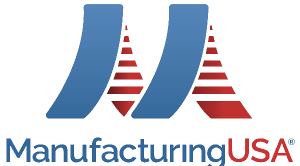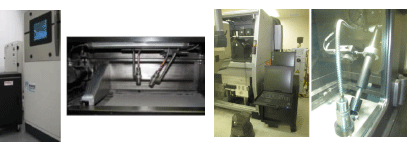


Sigma Labs PrintRite3D® provides a comprehensive package for certifying and qualifying metal, high-quality components produced via 3D printing.
The objective of this project is the development of a next generation 3D printing method by consolidating powder at many points on a part simultaneously.
Problem
Additive manufacturing (AM) in general, and direct metal laser melting (DMLM) in particular, are disrupting manufacturing technology, especially in the aerospace industry where costeffective, highly complex components in low production volumes are required. There are a lack of commercially available, platform-independent, in-process measurement systems for quality assurance technology for AM production of aerospace components.
The ability to perform in-process quality assurance during a build would significantly improve the qualification and certification process for complex metal parts.
Objective
The objective of this effort was to develop and advance in process monitoring technology for DMLM quality assurance. Sigma Labs PrintRite3D® IPQA® (in-process quality assurance) technology served as the basis for this project which sought to implement IPQA into a system prototype demonstration in an operational environment.
Technical Approach
The Sigma Labs PrintRite3D IPQA technology employs two photodiodes and a pyrometer to monitor melt pool optical emissions and a path toward rapid qualification, as well as in-process quality assurance through a proprietary classification algorithm to distinguish between features that are from a nominal process and those from an off-nominal process. The project team worked together to develop an experimental plan to:
- Install, verify, and validate process monitoring equipment
- Establish baseline critical-to-quality (CTQ) metrics and standard test plan
- Generate data for IPQA reference database
- Develop DMLM IPQA prototype tool
The repeatability of the measurement was assessed using multiple build platforms of an array of simple cylinder coupons with identical process parameters. The system sensitivity was quantified using a set of statistically designed experiments with different amounts of variation in the input process parameters to identify correlations between the CTQs and the in-process quality metric (IPQM®).
Accomplishments
Sigma Labs worked with the aerospace OEMs (GE Aviation, Honeywell International, and Aerojet Rocketdyne) to transition the IPQA technology into the preproduction environment at each of their facilities. PrintRite3D IPQA systems were installed at GE Aviation and Aerojet Rocketdyne while testing for Honeywell was completed using a PrintRite3D IPQA system at the Sigma Labs facility. To assist with development and commercialization efforts, the OEMs provided guidance in drafting functional and operational requirements for the technology.
A full factorial experimental design using simple cylindrical specimens was used to evaluate the sensitivity of the IPQA metric, a proprietary multivariate algorithmic approach to mine, fuse, and calculate quality metrics from one or more sensor outputs, to changes of ±20% from nominal laser power, scan speed, and spacing. This showed that the IPQA metrics were a function of the material and the machine used as well as laser power and scan speed, but were not dependent on hatch spacing. Using the same factorial design, the IPQA metrics were discovered to be a weak predictor of porosity. They were also found to be a limited predictor of ultimate tensile strength and fracture toughness with evaluation of the latter somewhat limited by a small sample size. The program results provided data on the material properties that were researched and discovered to not be reliably related to the IPQA process, laying the groundwork for future investigation into other new tools and approaches for in-process monitoring of laser powder bed additive manufacturing.
Project Participants
Project Principal

Other Project Participants
- Aerojet Rocketdyne
- Honeywell International Inc.
- TechSolve
- Burke E. Porter Machinery Co.
- B6 Sigma (Sigma Labs)
- Montana Tech of the University of Montana
Public Participants
- U.S. Department of Defense
- National Science Foundation
- U.S. Department of Energy
- 4007 Qualification of Processes for Repurposing and Rejuvenation of Die Casting
